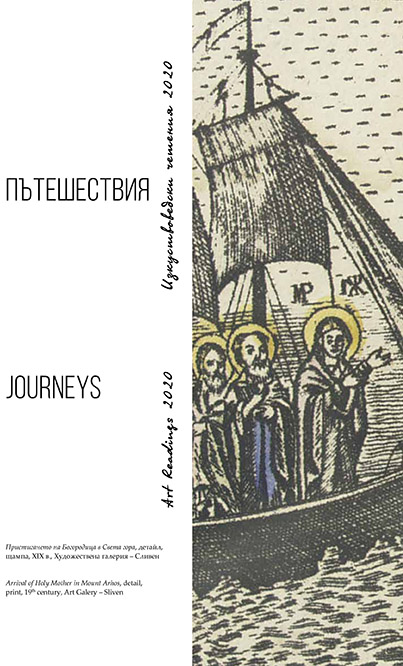Три писма от остров „Св. Анастасия“ от лятото на 1911 година
Three Letters from the Island of “St. Anastasia” from the Summer of 1911
Author(s): Ivan VanevSubject(s): History, Fine Arts / Performing Arts, Recent History (1900 till today), Pre-WW I & WW I (1900 -1919), History of Art
Published by: Институт за изследване на изкуствата, Българска академия на науките
Summary/Abstract: “St. Anastasia” is the only island on the Black Sea coast of present-day Bulgaria with a preserved monastery. It was under the jurisdiction of the Ecumenical Patriarchate of Constantinople until 1900, when it was sold with all its property by the last Greek abbot, Archimandrite Antim, to two Burgas entrepreneurs. The sale was met with great indignation by the Burgas public and was annulled in 1901 by the Burgas District Court. After that the monastery passed under the management of the Municipality of Burgas. The abandoned monastery church was solemnly consecrated on August 15th of the same year by the Sliven Metropolitan Bishop Gervasius. The text presents three unpublished letters by the publicist and social figure Raicho Raichev sent in 1911 from the island to Atanas Chilingirov who at that time worked at the National Archaeological Museum in Sofia. The letters reveal unknown moments in the history of the monastery in the early 20th c. and are evidence of the state of the cultural monuments and artefacts preserved there. During the sale, the monastery lost much of its cultural property, library and archives. Some artifacts were transferred to the Greek consulate in Burgas in 1901 and handed over to the Athens Metropolitan in 1929. Raicho Raichev’s letters also reveal an attempt that has been made to export icons. On July 25, 1911, a “Russian with several servants” arrived on the island. He searched the monastery and removed 12 old icons from one of the cells. The “Russian prayed to tears” to the guard of the monastery to let him take them, but thanks to the intervention of Raicho Raichev the icons remain in the monastery. At this stage of the research it is difficult to establish exactly which icons were saved by Raicho Raichev. Probably among them are the works of the icon painter Dimitar and Joan of Ahtopol, some of the most talented and sought-after painters who worked in the Western Black Sea region in the late 18th and early 19th centuries. Today the preserved icons are extremely important for future research of the monastery and its history. They are important for clarifying the construction periodization of the church, the dating of the iconostasis and are evidence of the financial capabilities and connections of the island monastery with the metropolitan centers along the coast.
Journal: Изкуствоведски четения
- Issue Year: 2020
- Issue No: 1
- Page Range: 329-344
- Page Count: 16
- Language: Bulgarian
- Content File-PDF

